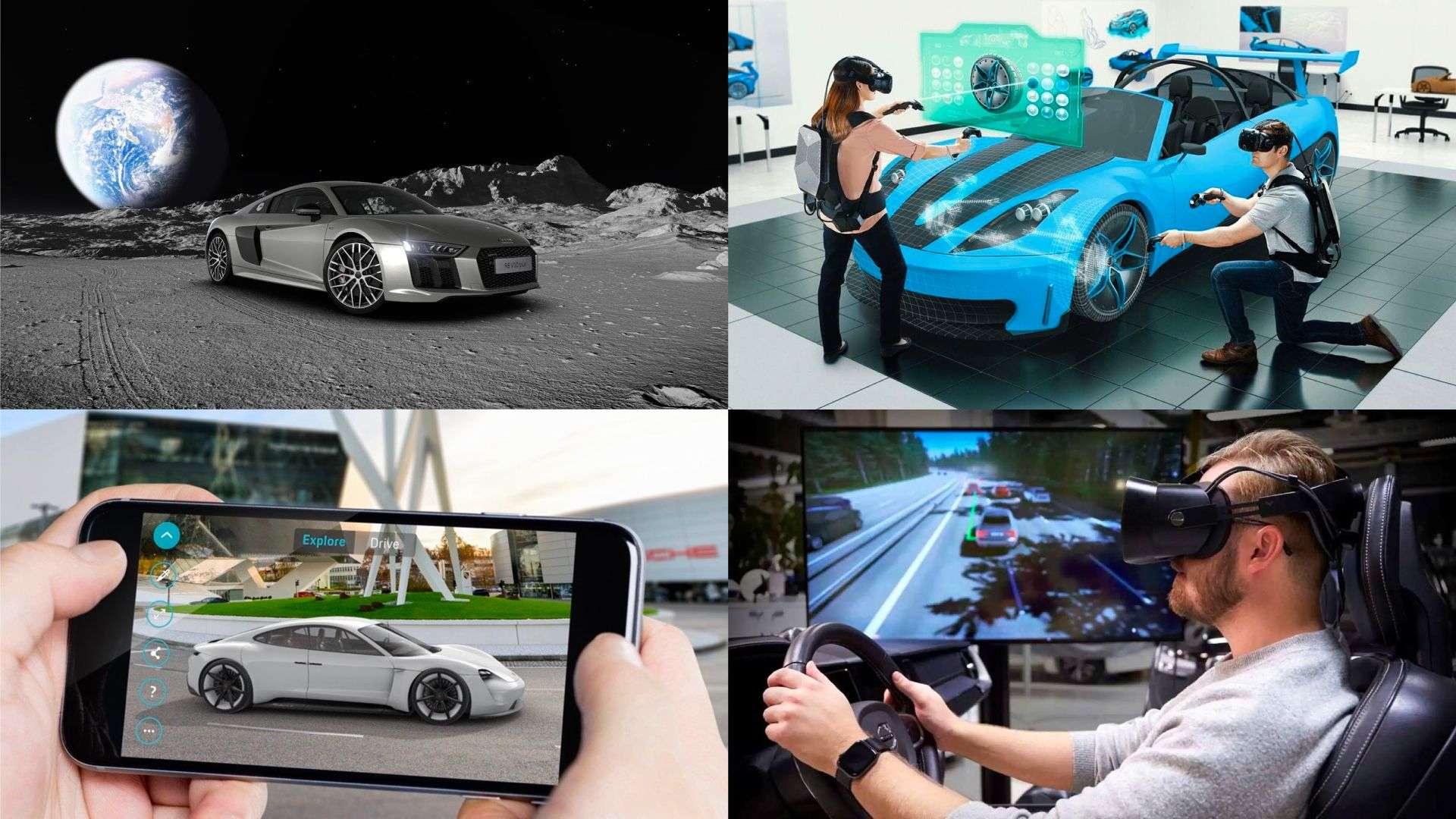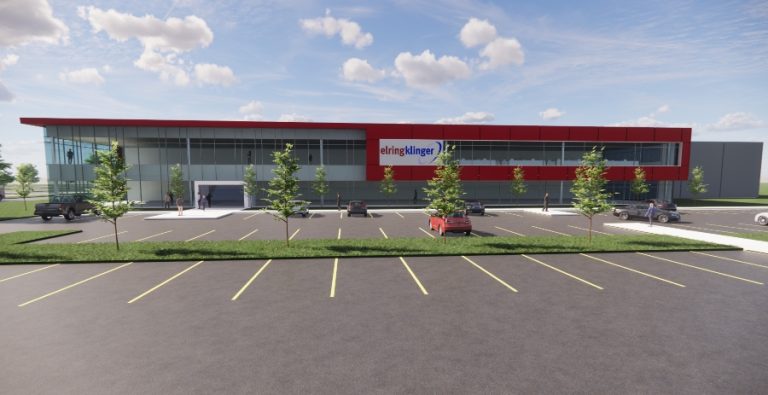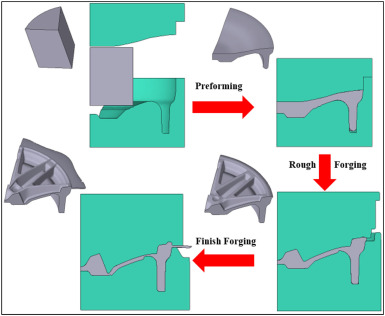Revolutionizing the Automotive Industry With Extended Reality Innovations

Extended Reality’s Rising Role in the Automotive Industry: Trends and Challenges
Extended reality (XR) is transforming the way the automotive industry approaches design, manufacturing, marketing, sales, and even after-sales service. Over the past few years, the fusion of virtual reality (VR), augmented reality (AR), and mixed reality (MR) has moved from the realm of experimental demos into practical, real-world use cases. In this editorial, we take a closer look at how major auto manufacturers and technology leaders are integrating XR into their operations and what it means for the broader business landscape.
Recent estimates suggest that the XR market in the automotive sector was valued at approximately $43 billion in 2024, with forecasts predicting a growth to near $69 billion by 2034. At the same time, the overall XR ecosystem is experiencing exponential growth—from roughly $253 billion in 2025 to more than $1.6 trillion by 2032—as new business applications emerge. As we stand at the intersection of electric vehicle (EV) programs, distributed design teams, and global supplier networks, XR is proving to be a key enabler in solving the tricky parts of communication, collaboration, and efficient production.
Electric Vehicles and Distributed Design: Pushing XR Adoption
One of the most critical drivers behind XR adoption is the rapid evolution of the electric vehicle landscape. EV programs are not only increasing the demand for cleaner transportation but are also reshaping manufacturing and design priorities. Distributed design teams spread across different time zones require a shared 3D context for co-creation, something XR delivers exceptionally well.
Manufacturers like BMW, Hyundai, Mercedes-Benz, and Stellantis are already using “digital twin” environments to test logistics and workforce planning even before physical production begins. These digital replicas allow for real-time simulation of production environments, where engineers can literally walk around virtual models of factories and tweak intricate details before any steel is cut.
Key benefits and applications of XR in this space include:
- Time Savings: Reducing planning cycles from weeks to days.
- Cost Efficiency: Avoiding millions of dollars in rework by ironing out challenges early.
- Improved Collaboration: Offering a common platform where design teams can offer feedback instantly.
Design, Prototyping, and Collaborative Decision-Making in an Immersive World
The design phase in automotive production is witnessing a remarkable transformation as extended reality moves from the abstract to the concrete. Historically, designs were reviewed on screens or built in clay models; now, they are brought to life in full-scale, virtual environments. These environments offer stakeholders the opportunity to walk around a vehicle in life-sized 3D, assessing everything from ergonomics to lighting conditions.
For example, BMW’s “Virtual Factory”—developed using NVIDIA’s Omniverse and OpenUSD frameworks—enables teams to rapidly iterate on the layout of a factory. Engineers from across the globe can come together within a shared virtual space, reducing planning time significantly. Similarly, Ford’s design teams use Gravity Sketch to enable real-time brainstorming sessions across continents, merging creative input with critical design feedback.
This immersive design approach leads to faster decision-making. Managers, designers, and safety engineers have the option to step inside a digital model, test critical aspects like visibility or physical ergonomics, and sign off on changes without the delays traditionally associated with physical prototypes.
To put it simply, XR in design has shifted the process from a passive review of a static model to an engaging, collaborative environment where every stakeholder is part of the creative journey.
XR on the Factory Floor: Manufacturing, Training & Workforce Enablement
On the manufacturing front, the application of XR is addressing some of the more intimidating aspects of production and training. Modern assembly plants are beginning to favor interactive, holographic training modules over traditional onboarding manuals. At Stellantis, for instance, immersive training sessions are replacing old-school classroom formats, leading to reductions in training times by around 40% and significantly boosting first-time fix rates.
XR technology is enabling factory operators to learn intricate assembly processes through real-time, hands-free guidance. Systems such as TeamViewer Frontline pair AR “vision-picking” with digital instructions projected directly into the operator’s field of view. This real-time overlay provides step-by-step assembly guidance, reducing picking errors and speeding up operations by up to 20%.
Some of the standout benefits of XR on the factory floor include:
- Enhanced Training Efficiency: Streamlined processes that cut down training time and improve safety.
- Real-Time Supervision: Integration with communication platforms that allow supervisors to monitor and annotate live sessions.
- Increased Productivity: Workforce enablement that allows team members to switch tasks without constant oversight.
These training modules are no longer isolated systems—they are deeply integrated with existing unified communication platforms, meaning remote coaching and supervision are now part of everyday operations. This interconnectedness has led to a workforce that is more agile, better prepared, and well-equipped to meet the rapidly changing demands of modern production.
Enhancing Sales, Marketing, and Customer Experiences with XR
The buying experience in the automotive industry is also undergoing a significant transformation with XR technology. Gone are the days when customers could only view static images or brochures. Today, global auto brands are embracing immersive digital showrooms that allow potential buyers to step inside a virtual car from the comfort of their own homes.
At brands like Mercedes-Benz and BMW, product launches are increasingly rolling out in hybrid showrooms. This XR-driven approach facilitates virtual walk-throughs where participants can explore the car’s interior, test out various features, and even simulate a drive. These digital environments offer an interactive experience that turns what used to be a daunting decision into a more intuitive and engaging process.
Research indicates that such immersive experiences can significantly boost buyer confidence: surveys suggest that interactive 3D configurators can increase online conversion rates by nearly 94% compared to traditional static demonstrations.
Key advantages of XR in this domain include:
- Green Marketing: Virtual launches reduce the need for international travel and large-scale, in-person events.
- Enhanced Engagement: Customers gain a genuine sense of the vehicle’s design and functionality, making the decision process feel more natural.
- Consistent Messaging: Digital showrooms ensure that every potential customer experiences the brand in a uniform way, irrespective of geographic location.
Beyond the consumer interface, dealerships and global sales teams benefit from XR too. Remote product training and marketing rollouts are now seamlessly integrated into these immersive environments, ensuring that sales representatives are as well-versed in the product details as they are in the brand story.
In-Vehicle XR Applications: A New Dimension in Driving
The evolution of XR is not confined to planning stages or training sessions; it is now making a pronounced impact within the vehicle itself. In-car augmented reality systems are gradually replacing traditional dashboards, transforming how drivers interact with navigation, safety systems, and entertainment platforms. BMW’s new iDrive HUD, for example, offers a full-width AR display projected across the windshield that overlays navigation cues and vehicle alerts onto the real-world view.
This immersive experience does much more than just update drivers on turn-by-turn directions—it offers a panoramic, data-rich canvas that feels intuitive and naturally integrated. BMW’s experimental work with Meta Reality Labs demonstrates how headset tracking syncs seamlessly with vehicular sensors, stabilizing digital content even as the car moves at high speeds.
Mercedes-Benz, with its MBUX AR HUD, is delivering similar capabilities in production models. Drivers now see digital arrows and safety notifications embedded in their line of sight, which can improve focus and reduce distractions. These systems open new data channels and service opportunities, such as contextual infotainment and even subscription-based navigation overlays.
The transformation of the cockpit into a mobile workspace is another exciting development. With vehicles now connected to unified communication systems like Microsoft Teams, the idea of conducting a huddle or joining a conference call while on the move is increasingly becoming a practical reality.
After-Sales, Service, and Supplier Coordination Made Easier
The story of extended reality in automotive does not end at the point of sale. Once a vehicle leaves the production line, XR continues to play a crucial role in after-sales service and maintenance. Technologies such as Porsche’s PARiS system—Porsche Augmented Reality in Service—are reinventing how technicians approach car repairs.
By wearing smart headsets that overlay digital schematics onto physical vehicles, service professionals can instantly access detailed repair instructions. This integration reduces the need to pore over traditional manuals and speeds up repair times significantly, thereby improving first-time fix rates. Similar AR tools are being deployed by companies like Plutomen and Antaeus AR, which help bridge the gap between inexperienced users and expert-level servicing.
Benefits of XR in after-sales and supplier coordination include:
- Time Efficiency: Quicker diagnosis and repair processes that reduce downtime for vehicles.
- Improved Accuracy: Layering precise digital instructions over real-world equipment minimizes errors.
- Cost Savings: Reduced need for repeated repairs ensures long-term savings in maintenance budgets.
Moreover, applications like TeamViewer Frontline’s AR-enabled support have helped manufacturers boost first-time fix rates by 30–40% while cutting major travel expenses for experts by up to 35%. Such innovations not only enhance customer satisfaction but also optimize the overall supply chain workflow by making troubleshooting more efficient and less time-consuming.
Key Technologies, Challenges, and a Path Forward for XR in Automotive
With all these groundbreaking use cases, you might wonder what technological breakthroughs are making this revolution possible. Several key enablers are driving the rapid adoption of XR in the automotive industry:
| Technology | Description |
|---|---|
| 5G and Edge Computing | Provide the low latency required for real-time rendering and remote collaborations in XR environments. |
| AI Co-Pilots | Voice assistants like Google’s Gemini Live convert natural gestures and speech into instant commands within XR platforms. |
| Open Standards | Frameworks like OpenXR and OpenUSD ensure that various engineering and design systems speak the same language, enhancing interconnectivity. |
| New Hardware Ecosystems | From Samsung’s Galaxy XR platform to Apple’s Vision Pro and Meta Quest 4, the range of available devices continues to expand, catering to multiple industrial needs. |
While these technological strides are impressive, the deployment of XR is not without its tricky parts. Integrating new systems with traditional engineering tools can feel like trying to figure a path through tangled issues. For many organizations, the fine points of establishing a seamless digital-to-physical workflow are both intimidating and off-putting.
The challenges often include:
- Technical Integration: Merging cutting-edge XR with legacy systems requires a gradual, step-by-step approach.
- Privacy and Data Ownership: Security rules and data management remain loaded with issues that need careful handling.
- Proving ROI: Demonstrating clear returns on investment is essential to justify the shift from traditional methods to XR-based systems.
Industry leaders recommend starting small—piloting XR solutions in a single workflow (such as training or prototyping) to measure results before scaling across other areas. Once the proof-of-concept delivers clear benefits, a structured rollout can help companies manage the nerve-racking process of full-scale integration.
Building a Future for XR Integration Across the Automotive Sector
The evolution of XR in the automotive industry is much more than a temporary trend—it is a blueprint for how modern vehicles are designed, built, and maintained. The transformative power of XR is clear: it compresses time frames, mitigates the confusing bits of traditional production methods, and creates a collaborative environment that transcends geographic and organizational boundaries.
The shift to this new reality is redefining the automotive workspace. XR meeting rooms, integrated directly within video conferencing platforms like Microsoft Teams and Cisco Webex, exemplify how digital interactions are merging with tactile, immersive experiences. These virtual meeting spaces, complete with spatial audio and real-time AI translation, offer a sense of presence that goes far beyond what a conventional video call can provide.
Not only are designers and engineers benefiting from the enhanced collaborative experience, but even customers are seeing tangible benefits. Immersive retail spaces and digital showrooms provide a personalized way to engage with a brand—turning the vehicle buying process from a nerve-racking decision into an engaging exploration.
Looking ahead, the automotive industry has every reason to be excited. Innovations in XR promise to accelerate the entire production process, boost productivity, and offer unprecedented insights into vehicle performance and customer preferences. As companies become more comfortable with these new tools, they are likely to expand usage across multiple segments, from refining design prototypes to reimagining the in-car experience.
The Bottom Line: Extended Reality as a Catalyst for Industry Transformation
In summary, as we witness the booming integration of XR within the automotive sector, it becomes clear that the technology is more than just an experiment—it is shaping the very future of the industry. From streamlining design and prototyping to reimagining the customer experience, XR is quickly transforming every facet of automotive production and service.
Key takeaways include:
- Enhanced Collaboration: Removing barriers created by geographic distances and outdated technologies.
- Operational Efficiency: Minimizing training times, reducing rework costs, and streamlining manufacturing processes.
- Customer Engagement: Providing immersive, personalized experiences that build trust and confidence in the brand.
- New Revenue Opportunities: In-vehicle XR systems pave the way for subscription-based services and smart mobility solutions.
As XR technology continues to mature and become more accessible, companies that take a calculated, phased approach to implementation will likely reap the most benefits. Starting with a single process or department and gradually incorporating XR capabilities across the board can help overcome the intimidating twists and turns that come with major digital transformations.
Ultimately, extended reality is not about replacing the traditional world but about enriching it—providing more dynamic, flexible, and efficient ways for people to work, design, and interact. For the automotive sector, this evolution is a clear sign that the future is now, and those who embrace these innovative tools will find themselves well-positioned to lead the industry into a new era of digital collaboration and unified communication.
As our society edges ever closer to a fully integrated industrial metaverse, the melding of physical and virtual realities stands to not only accelerate production cycles and enhance operational efficiencies, but also to redefine the very nature of creativity and problem-solving in manufacturing. Extended reality is proving to be a must-have tool for tackling the subtle parts of modern industry challenges, ensuring that the automotive sector remains agile and competitive in a rapidly evolving market.
The opportunities presented by XR are super important for automakers looking to streamline workflows, improve training methodologies, and create engaging customer experiences. Just as the industry’s digital transformation has demystified many previously off-putting processes, XR stands ready to dismantle even more of the conventional barriers that have long held back innovation.
In closing, extended reality is not merely a technological upgrade—it is a fundamental shift in how we think about design, collaboration, and customer engagement. By integrating immersive tools directly into their everyday operations, automotive companies can tackle the challenging bits of production, enhance skills transfer on the factory floor, and offer a new level of clarity and connectivity to customers around the world.
For industry leaders willing to invest in this transformation, the rewards could be substantial—a seamless blend of technological prowess and human ingenuity that paves the way for a truly connected automotive ecosystem.
Originally Post From https://www.uctoday.com/immersive-workplace-xr-tech/extended-reality-automotive-use-cases-real-ways-to-use-xr-in-the-automotive-industry/
Read more about this topic at
How You Can Use Immersive Technologies to Reinvent …
How the Auto Industry Is Undergoing a Game-Changing …




